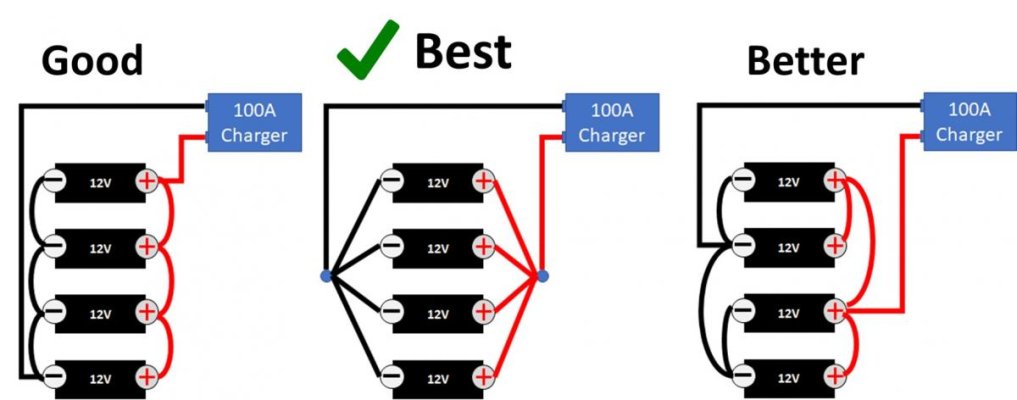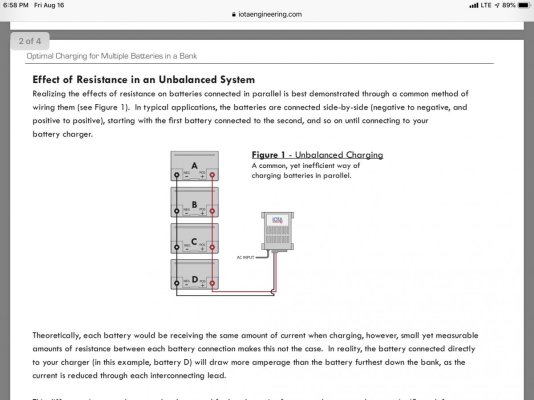According to the SmartGauge website, even the short cables interconnecting the batteries create resistance contributing to inconsistent charging of some of the batteries in the bank.
I’m sorry, but here is the math behind it.
4/0 wire has a resistance of .049 ohms per 1000 feet. That means it has a resistance of .000049 ohms per foot.
if you have a 100 amp charging current then the voltage drop per foot is .0049 volts per foot.
If you wire your boat house batteries using a daisy chain technique you are adding maybe a foot or two of cable. Maybe even 5 feet total, but that is a stretch.
That is a tiny difference in voltage drop.
You will get more variation in voltage drop due to differences in torque on the bolts on your battery connectors.
so... Based on my 40 years of hands on experience in the electrical field, including many years of professionally maintaining stationary batteries, and the two week long classes I have attended on the subject...
I respectfully call BS on the whole wiring issue.
It’s not that the folks back at the lab’s intentions are not good, they just do not reflect the reality of boat systems.
Even the photo (see attached) they used is flawed. Their photo represents a four deep parallel battery bank, which is really pretty unusual in a boat.
Generally in a boats house bank we use 6 volt batteries and generally two in series for 12 volts, and two in parallel for capacity. A four battery bank in series and parallel is probably the most common.
Then we have wire sizes. The articles do not indicate voltage drop based on wire size, and almost every house bank I have seen on a boat is wired with 4/0 cable.
I’m not saying the engineers are wrong, I’m saying that their testing criteria does not accurately reflect real world installations in boats.





